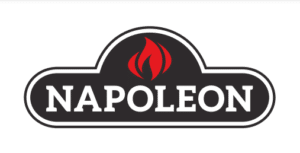Fireplace installation isn’t as simple as plugging in a unit or placing it in a wall. It’s a multi-step process that takes planning, permits, and help from trained professionals.
This guide breaks down what you can expect during a fireplace install. We’ll cover everything from the first consultation to final safety checks. Knowing what’s ahead helps you avoid delays, make smarter choices, and get the best results for your home.
Step 1: Initial Consultation & Picking Your Preferred Fireplace
Every fireplace installation starts with a consultation. This is when you meet with a professional to assess your space, review your goals, and get expert advice on the best type of unit for your home.
Many homeowners begin by searching for local experts who can guide them through options and pricing.
Find fireplace installation near me
Assess Your Space & Heating Needs
Before choosing a fireplace, installers need to look at the size and shape of your space. They’ll check things like room dimensions, ceiling height, layout, and whether there’s already venting in place.
This step usually includes a home visit or a virtual consultation to take measurements and see what’s possible. You’ll also want to explain your main goal: do you want cozy ambiance, more warmth, or a primary heat source?
Getting clear on these details early ensures the fireplace you choose will actually work for your space and needs.
Gas, Electric, or Wood-Burning Fireplaces: Find the Right Fit
Choosing the right fireplace starts with understanding how each type works and what it offers.
- Gas fireplace installation is a popular option for its clean burn, high efficiency, and ease of use. Gas units heat quickly and can produce around 20,000 BTUs—enough to warm 1,600 to 2,000 square feet. If your home has a gas line, this is often the most powerful and convenient choice.
- Electric fireplace installation is the simplest route. These units don’t need venting and work well in bedrooms, apartments, or bonus rooms. A typical 1500-watt electric fireplace generates about 5,000 BTUs, which can heat up to 500 square feet as a secondary heat source. This may be the way to go if flexibility and low maintenance matter most.
- Wood-burning fireplaces provide the traditional crackle and charm, along with serious heat output. But they require a chimney, regular cleanings, and ongoing maintenance. They’re best suited for homeowners who don’t mind the extra work and want a more classic feel.
Think about whether you’re replacing an existing fireplace or doing a brand-new gas fireplace install. Consider your home’s layout, access to gas or power, and your lifestyle when making your choice.
Step 2: Site Assessment & Permits
Once you’ve chosen your fireplace, the next step is a site visit from a licensed installer. They’ll take final measurements and inspect the space where the unit will go.
During this visit, they’ll check for proper framing, safe clearances from walls or floors, and any venting needs. These details help ensure a smooth and safe gas fireplace installation.
Permits are also part of this step. Most towns and cities require one before work can begin, especially for gas or wood-burning units. Your installer will often handle this process for you. Take time to research and find to find licensed pros who know the local codes
Review Electrical & Venting Requirements
Once the site is assessed, the next step is to check the power and venting setup. For an electric fireplace, installers will inspect nearby outlets and confirm that your electrical system can support the unit. In some cases, you may need a dedicated circuit or an upgrade to your panel.
For a gas fireplace installation, the crew will examine the existing gas line or identify where a new one can be added. Venting is also a big part of this step. Gas units often use direct venting through an exterior wall, while wood-burning fireplaces need a flue or chimney to safely release smoke.
If anything is missing—like proper airflow or safe power access—your installer will let you know what needs to be added or changed to move forward.
Step 3: Installing Your Fireplace
This is the phase where the fireplace installation actually happens. The unit is brought in, set in place, and connected to the right systems, whether that’s electricity, gas, or a chimney.
Depending on the setup, this part may involve carpentry to build a frame or mantel, electrical work for power, or plumbing for gas lines. Installers will also handle venting if it’s required. Whether it’s a built-in, insert, or freestanding model, each fireplace install comes with its own challenges.
Average Timeline for the Installation Process
The time it takes to complete a fireplace installation depends on the type of unit and your home’s setup. For electric fireplace installation, most jobs are finished in about 4 to 8 hours. These are the quickest because they don’t require venting or major construction.
Gas and wood-burning units usually take longer—about 1 to 2 days—since they often involve plumbing, venting, and safety inspections. If your install includes custom framing, a mantel buildout, or stonework, expect the timeline to stretch out to several days or even a full week.
Factors like weather delays, permit approvals, or scheduling inspections can also slow things down. It’s good to plan with a little flexibility in mind.
Step 4: Final Inspection & Safety Testing
Once your fireplace is installed, it needs to be tested for safety and performance. This step includes making sure everything is working as it should, including the heat output, venting, and control features.
Installers will also go through a series of safety checks. In many cases, a formal inspection is required by your local building department.
Testing the System
After the installation is complete, the installer will run a full system check. They’ll start the fireplace, make sure it operates correctly, and confirm that it shuts down safely.
For electric units, they’ll test the power connection and verify that the heater and flame effects are working. For gas fireplaces, they’ll check flame height, ignition, and the pilot light.
Any included remotes, thermostats, or wall switches will also be tested to make sure you can control the unit without issues.
Safety Checks
Safety is a top priority during any fireplace installation. The installer will make sure the unit has enough clearance from walls, furniture, and other materials that could catch fire.
If your fireplace includes a safety screen or barrier, that will be tested to ensure it’s secure and functioning. For gas units, venting will be checked for leaks or misalignment, and carbon monoxide safety measures may also be reviewed.
These checks help make sure your fireplace operates safely from day one.
Permit & Code Compliance Inspections
After installation, many local governments require an official inspection to sign off on the work. This ensures the fireplace meets all building and fire safety codes, especially for a gas fireplace install or a wood-burning unit.
The installer usually handles the scheduling and coordination with your city or county building department. Once approved, you’ll have peace of mind knowing everything is up to code.
Final Walkthrough of Your Fireplace
Before the job is officially done, your fireplace installer will walk you through how everything works. They’ll show you how to safely operate the unit, adjust the settings, and use the thermostat or remote controls.
They’ll also cover basic care tips and explain how to turn off the system in case of an emergency. This is the perfect time to ask any last questions and make sure you feel safe and assured using your new fireplace.
Start-Up & Educating Yourself as a Homeowner
Once your fireplace is installed and inspected, the final step is getting comfortable with using it. A technician will walk you through all the features and make sure you understand how to run and maintain it.
What to Expect During a Start-Up Appointment
During the start-up visit, a technician will go over how to ignite your fireplace, adjust the heat, and use any built-in fans or remote controls. They’ll double-check that everything is working the way it should.
You’ll also get a quick review of the safety features and how to operate the system day-to-day. If you ever need help down the line, searching for electric fireplace installers near me can connect you with local support.
Learning How to Use Your Fireplace
Once your fireplace is set up and tested, it’s important to learn how to use it the right way. Your technician will show you how to adjust the flame, set timers, and operate the fan or blower system if your unit has one.
They should also explain the best safety habits, like keeping flammable items away and knowing how to shut the unit off quickly. You may get a manual or links to online resources so you can refer back to the instructions when needed.
The Importance of Maintenance After Your Fireplace Installation
Your fireplace needs regular care to keep working safely and efficiently.
Electric fireplaces are easy to maintain and mostly need simple cleaning. Gas and wood-burning units should be checked by a pro once a year to make sure everything is safe and running right.
Taking care of your fireplace helps prevent problems and keeps it working well for many years.
Your Next Steps Toward a Warmer, Safer Home
Fireplace installation may seem like a big project, but breaking it into clear steps makes it easier to manage. From choosing the right fireplace to final inspections, each phase is designed to keep your home safe, warm, and stylish.
To recap: start with a consultation to match your fireplace to your space and heating needs. Make sure your installer handles permits and code checks. Understand the pros and cons of electric, gas, and wood-burning models. Trust professionals to do the work safely and walk you through how to use your new unit.
If you’re thinking about a fireplace install, now’s the time to take action. Talk to a local expert, ask questions about your options, and request a free estimate to start your project off right.



